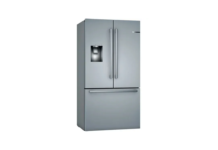There are many reasons to insulate your home. Not only does it make your home more comfortable and save you money on your energy bills, but it can also increase the value of your property. In this blog post, we will discuss some of the best insulation tips, tricks, and benefits. We will also provide information on how to choose the right type of insulation for your home. So if you’re looking to improve the comfort and efficiency of your home, read on!
Tips on How to Insulate Your Home
#1: Check for Air Leaks
The first step to insulating your home is to check for air leaks. These can occur around doors, windows, electrical outlets, and other openings in the home. To seal these leaks, you can use caulk, weatherstripping, or expansion foam.
#2: Insulate Your Attic
One of the best ways to improve the efficiency of your home is to insulate your attic. This will help keep your home cooler in the summer and warmer in the winter. When selecting attic insulation, be sure to choose a product that has a high R-value (resistance to heat flow). Some of the most popular types of attic insulation include fiberglass batts, blown-in cellulose, and spray foam.
#3: Add Insulation to Your Walls
Adding insulation to your walls is another great way to improve the efficiency of your home. This can be done by installing batts or blankets of insulation between the studs of your exterior walls. If you live in an older home, you may also want to consider adding insulation to your interior walls. This can be done by removing the drywall and blowing in insulation or adding it between the studs.
Benefits of Home Insulation
There are many benefits to insulating your home, including:
#1: Improved Comfort
Better comfort is one of the primary advantages that come with more insulation in the home. You can prevent drafts and hot spots in your home by maintaining a consistent temperature throughout the house. Because of this, it will be easier for you to live in your house for the entire year.
#2: Reduced Energy Bills
Another benefit of home insulation is reduced energy bills. By insulating your home, you can reduce your heating and cooling costs by up to 30%. This means that your investment in insulation will pay for itself over time.
#3: Increased Property Value
Insulating your home can also increase its value. This is because energy-efficient homes are in high demand among buyers. So if you’re looking to sell your home in the future, insulating it now could help you get a higher price.
If you are considering home insulation and you want it perfectly done, you need the services of an insulation company. Home Insulation from iFoam is the perfect way to reduce your energy costs. They use top-quality products and their highly trained professionals will ensure that your home is properly insulated.
How to Choose the Right Type of Insulation
There are many different types of insulation available on the market, so how do you know which one is right for your home? The answer depends on several factors, including:
#1: The Climate
The first thing that should be taken into consideration is the climate in which you live. In order to maintain a comfortable temperature inside of your home throughout the winter months, you will require insulation that has a high R-value. On the other hand, in order to maintain a comfortable temperature inside of your house during the warm summer months, you will require insulation that has a low R-value.
#2: The Type of Home
The next factor to consider is the type of home you have. For example, if you have an older home with single-pane windows, you’ll need different insulation than someone who has a newer home with double-pane windows.
#3: Your Budget
Finally, you’ll need to consider your budget when choosing insulation. There are many different types of insulation available, and they all have different price points. Be sure to select an insulation that fits within your budget.
Types of Insulation Available in the Market
There are many different types of insulation available on the market, including:
- Fiberglass Batts: Fiberglass batts are one of the most popular types of insulation. They’re made from glass fibers that are arranged into batting. Fiberglass batts come in a variety of thicknesses and R-values.
- Blown-In Cellulose: Blown-in cellulose is another popular type of insulation. It’s made from recycled paper products that are treated with fire retardants. Blown-in cellulose can be used in attics, walls, and floors.
- Spray Foam: Insulation in the form of spray foam is applied to surfaces using a spraying process. It is an efficient method of insulating a home because it can expand to fill in spaces where air can escape, such as cracks and gaps. Both open-cell and closed-cell varieties of spray foam are available for purchase.
- Rigid Foam Boards: Rigid foam boards are made from extruded polystyrene, which is a type of plastic. Rigid foam boards are often used to insulate basements and crawl spaces. They can also be used to insulate the exterior of a home.
No matter what type of insulation you choose, be sure to select a product with the right R-value for your climate and home type. This will ensure that your home is comfortable and energy-efficient.










![Anso FG Reviews: UPDATED 2024 [ansofg.com] Anso FG Reviews UPDATED 2024 [ansofg.com]](/wp-content/uploads/2023/12/Anso-FG-Reviews-UPDATED-2024-ansofg.com_-100x70.png)







